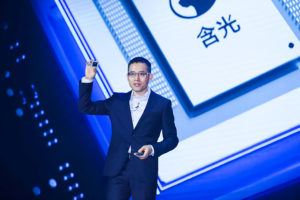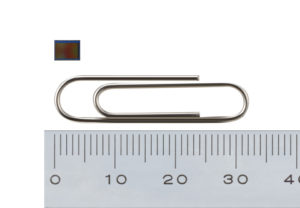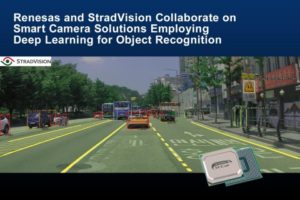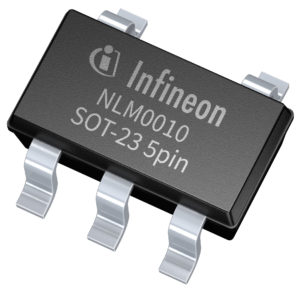
EDACafe Editorial Roberto Frazzoli
Roberto Frazzoli is a contributing editor to EDACafe. His interests as a technology journalist focus on the semiconductor ecosystem in all its aspects. Roberto started covering electronics in 1987. His weekly contribution to EDACafe started in early 2019. Google’s quantum computer; Alibaba’s AI chip; Huawei-Arm cooperation; and more industry newsOctober 3rd, 2019 by Roberto Frazzoli
The 5-nanometer process node is getting closer to volume production, with TSMC providing certifications for its N5 process to major EDA and IP vendors – such as Ansys, Cadence, Mentor, Synopsys and Moortec. In the meantime, there is no shortage of news from all fronts, ranging from futuristic computers to transformer’s coils. Google’s paper on quantum computing As widely reported by many media outlets, Financial Times’ journalists have managed to read a paper – briefly posted on a Nasa website and then removed – where Google’s researchers claim that their quantum computer was able to perform a calculation in approximately three minutes that would take today’s most powerful supercomputer 10,000 years. According to the Financial Times, the paper hailed this achievement as “an experimental realization of quantum supremacy on a computational task” and “the advent of a much-anticipated computing paradigm.” Due to the removal of the paper, and the lack of comments from Google, the mystery continues. Alibaba’s AI chip speeds up e-commerce It was not if, but when: Alibaba, too, has announced its own AI inference chip. Named Hanguang 800, it reaches a peak performance of 78,563 IPS, with an efficiency of 500 IPS/W in the Resnet-50 inference test. It is currently used internally by Alibaba, for tasks such as product search and automatic translation on e-commerce sites, personalized recommendations, advertising, and intelligent customer services. Thanks to this chip, for example, Alibaba has been able to cut the time required for categorizing one billion products from one hour to five minutes. The AI chip was developed by Alibaba’s research unit, T-Head – whose Chinese name is Pintouge. Earlier this year, T-Head debuted XuanTie 910, a RISC-V-based IoT processor.
Huawei and Arm still cooperating As reported by EETimes, executives from Arm, Arm China and HiSilicon (Huawei’s chip division) met behind closed doors on September 25th in Shenzhen, China. After the meeting, they stood in front of the press for a group photo with a handshaking pose. The message is clear: cooperation between Arm and Huawei has not been disrupted by the US-China trade war. Chiplet news Chiplet-based solutions are gaining traction. Arm and TSMC have unveiled a proof-of-concept chiplet system based on multiple Arm cores, leveraging TSMC’s Chip-on-Wafer-on-Substrate (CoWoS) packaging technology. This chiplet system demonstrates the key technologies for building an HPC System-On-Chip based on Arm cores operating at 4GHz in a 7nm FinFET process, with an inter-chiplet interconnect capable of 8Gb/s over the interposer. Progress has been announced also by the Open Compute Project (OCP), that has recently launched a chiplet subproject. The goal: defining an open interface and architecture that enables the mixing-and-matching of silicon chiplets from different vendors via an open marketplace onto a single SoC. Multiple working groups have been established, tasked with developing a chiplet interface, a proof-of-concept and a business process, including a Chiplet Design Exchange (CDX). Member companies of the various groups include Achronix, Aquantia, ASE, Avera Semi, Ayar Labs, Cadence, Cisco, Facebook, Microsoft Azure, Netronome, NXP, Sarcina and zGlue. Xilinx AI-related agreements Xilinx’s Versal, an adaptive compute acceleration platform (ACAP) built for AI inference, will use Micron Xccela flash and other Micron memory solutions to reduce system startup times and increase system responsiveness in AI applications, such as ADAS. Xilinx has also entered into a strategic relationship with Cortical.io, a company specializing in AI-based Natural Language Understanding (NLU) solutions. Cortical.io unveiled its NLU technology running on Xilinx Alveo accelerator cards – demonstrating orders-of-magnitude performance increases over standard computing platforms – during the Xilinx Developer Forum in San Jose, October 1-2. Vision news Samsung has introduced the industry’s first image sensor with a pixel size of just 0.7 μm. Named Isocell Slim GH1, the new sensor encompasses 43.7 megapixels in a very small package, enabling 4K video recording with minimum loss in field of view (FoV) even on slim smartphones. Renesas and StradVision, a vision processing technology solutions provider for autonomous vehicles, have jointly developed a deep-learning object recognition solution for smart cameras used in ADAS applications. Based on Renesas’ R-Car V3H and V3M automotive SoCs, the solution is capable of detecting vulnerable road users – such as pedestrians and cyclists – with a very low power consumption. The MIPI Alliance has announced major enhancements to MIPI Camera Serial Interface-2 (MIPI CSI-2). New features include a Unified Serial Link (USL), to reduce the number of wires; Smart Region of Interest (SROI), for analyzing images; and RAW-24, for representing individual image pixels with 24-bit precision. A novel winding technique Innovation can improve even mature components such as transformers. Murata has come up with a new transformer technology for high power, high frequency applications (up to 400kW, 50kHz) that uses a novel winding technique to reach a higher efficiency (>99.5 %) in a compact footprint. As explained in this video, the new technique uses flat wires, with both coils (primary and secondary) wound adjacently for their whole length. This enabled Murata to overcome the skin and proximity effects, as well as other high frequency losses associated with conventional construction methods. Higher efficiency also improves thermal performance; other benefits of the new winding technique include an increased working voltage and high isolation voltage. NFC programming of LED drivers becomes simpler Not only contactless payments: Near Field Communication (NFC) interfaces are increasingly being integrated into LED drivers, as a way for “programming” (setting) parameters such as the current level. This capability is used by manufacturers of LED drivers or luminaries to adapt a single product to different requirements, with many benefits compared to the traditional programming technique based on plug-in resistors. The existing implementation of NFC programming, though, requires a microcontroller, a scheme suited to high-end products. Now, a new solution developed by Infineon offers lower cost and can therefore be applied to a wider range of LED luminaries. The new concept is based on an NFC IC with a PWM output to control the analog driver IC directly, without a microcontroller. Named NLM0011 and NLM0010, the two Infineon NFC-PWM chips also feature a constant lumen output (CLO) function that compensates the luminous flux drop (aging effect) of the LED module. Semiconductor acquisitions According to IC Insights’ McClean Report, semiconductor merger and acquisition activity strengthened in the first eight months of 2019, with about twenty M&A agreement announcements totaling a value of $28 billion. And this trend continues: recent announcements include Western Digital’s acquisition of Kazan Networks (a provider of NVMe-over-Fabric ASIC and adapter products for data center architectures), Marvell’s acquisition of Aquantia (a provider of Multi-Gig networking technology), and TE Connectivity acquisition of Silicon Microstructures (a manufacturer of MEMS-based pressure sensors). |
|
|
|||||
|
|
|||||
|
|||||










